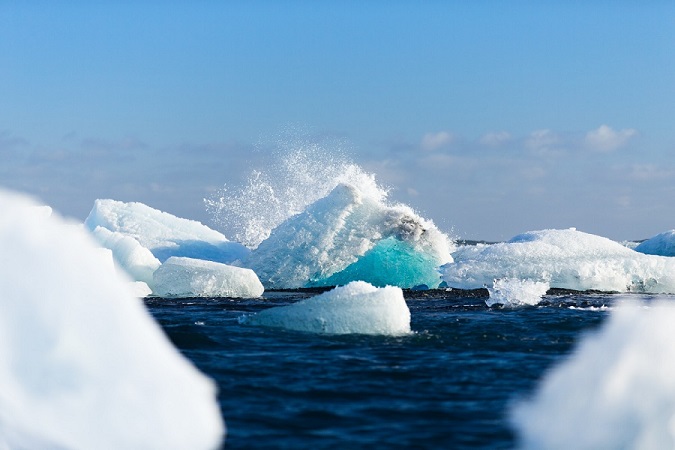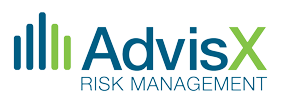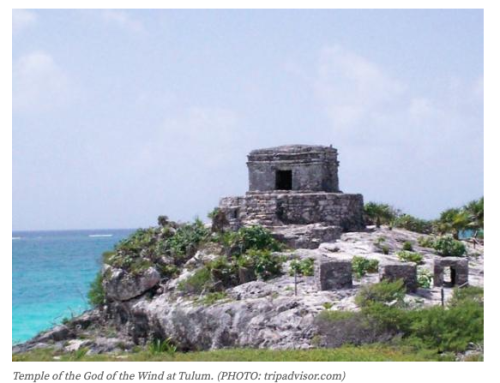Spectrums Within the Spectrum
 Water is an amazing thing. In fact, it is a very unusual substance. Think about it. Ice floats in water. Try and find another substance where such occurs and you might be searching for a long time. Ask almost any U.S. citizen at what temperature water freezes and they’ll probably tell you boldly, “32 degrees.” This is generally true. In fact, water will not freeze with the temperature air at or above 33 degrees regardless of how far the wind chill is below freezing. Wind chill has no effect on inanimate objects, and they cannot be cooled below the ambient air temperature. But while water can freeze at 32 degrees, it isn’t really all that frozen. For water to really freeze the temperature has to drop further. In fact, scientists have managed to still have water (very small bits mind you) at temperatures as low as -47.2. Of course, that coldness lasted nano-seconds but that isn’t particularly the point of this article.
Water is an amazing thing. In fact, it is a very unusual substance. Think about it. Ice floats in water. Try and find another substance where such occurs and you might be searching for a long time. Ask almost any U.S. citizen at what temperature water freezes and they’ll probably tell you boldly, “32 degrees.” This is generally true. In fact, water will not freeze with the temperature air at or above 33 degrees regardless of how far the wind chill is below freezing. Wind chill has no effect on inanimate objects, and they cannot be cooled below the ambient air temperature. But while water can freeze at 32 degrees, it isn’t really all that frozen. For water to really freeze the temperature has to drop further. In fact, scientists have managed to still have water (very small bits mind you) at temperatures as low as -47.2. Of course, that coldness lasted nano-seconds but that isn’t particularly the point of this article.
Here is the point to this article: there are parallels to this aspect of water in the world of AML Risk. To get there, let’s take a look at the FFIEC BSA/AML Examination Manual section on Customer Due Diligence (5/5/2018) where the following is observed.
“The cornerstone of a strong BSA/AML compliance program is the adoption and implementation of risk-based CDD policies, procedures, and processes for all customers, particularly those that present a higher risk for money laundering and terrorist financing. The objective of CDD is to enable the bank to understand the nature and purpose of customer relationships, which may include understanding the types of transactions in which a customer is likely to engage. These processes assist the bank in determining when transactions are potentially suspicious.”
“Customers that pose higher money laundering or terrorist financing risks, (i.e., higher risk profile customers), present increased risk exposure to banks. As a result, due diligence policies, procedures, and processes should define both when and what additional customer information will be collected based on the customer risk profile and the specific risks posed. Collecting additional information about customers that pose heightened risk, referred to as enhanced due diligence (EDD), for example, in the private and foreign correspondent banking context, is part of an effective due diligence program. Even within categories of customers with a higher risk profile, there can be a spectrum of risks and the extent to which additional ongoing due diligence measures are necessary may vary on a case-by-case basis.” [Emphasis Added]
Water’s properties, of course, extend beyond freezing. We have boiling as well (yes, 212 degrees F, not 211). When thinking about this spectrum, we might draw a parallel to BSA Risk. Within any financial regulatory organization, risk exists. However, there is certainly a vast spectrum of risk. Even within the areas of greatest risk, that spectrum exists. The need to leverage that spectrum within an organization’s BSA/AML program has never been greater. Without leveraging that spectrum, organization’s finite resources, like fresh water, might easily be wasted.
How to Leverage the Spectrum of Metrics for Higher Risk Customers
If, as regulatory guidance establishes, a spectrum of risk exists, “[e]ven within categories of customers with a higher risk profile,” then not all degrees of risk are equal. Effectively, organizations must apply available metrics in order to maximize the opportunity to establish and defend its spectrum of risk. The value of such is further noted by the regulatory guidance that indicates that the extent of additional due diligence measures that are needed “may vary on a case-by-case basis.”
Given that this spectrum exists and has a potential impact on an organization’s efforts, it becomes critical that organizations identify what aspects or metrics are likely within customer risk, especially, higher customer risk, that may merit variances in approach.
AdvisX has promoted this principle as it applies to alert generation as part of its OCEANS services (see https://www.advisx.com/services/oceans-finally-relief-from-the-tsunami-of-aml-alerts/). OCEANS is the acronym of Optimization Consulting Enhancement Alert Notification System. The principle of OCEANS focuses on utilizing factors available to an organization’s alert system that might reduce the number of alerts. This exercise can save organizations thousands of alerts per year without deterioration of program quality.
More recently, AdvisX has focused that spectrum of risk on Enhanced Due Diligence efforts of organizations. Regulatory guidance and logic support that organizations complete EDDs for higher risk customers on a regular basis. One organization indicated that the average time to complete an EDD is four hours. Clearly, as organizations identify entities with higher risk profiles, the demands of even annual EDDs on such entities becomes burdensome as information must be gathered, analyzed, presented, and reviewed. Each of these will clearly require time placing pressures on the organization especially as resources become restricted.
Accounting For Salt, i.e., Variables That Affect Risk
 Just like water, which is greatly affected by degrees of temperature, high risk entities may be affected by degrees of risk, which we call the Spectrum. Interestingly, the ocean itself doesn’t freeze at 32 degrees Fahrenheit. Rather, it freezes at around 28.4 degrees. This is because of the salt content. When salt water freezes, the salt in the water is largely eliminated, which is why ice from an iceberg can be melted and used as drinking water.
Just like water, which is greatly affected by degrees of temperature, high risk entities may be affected by degrees of risk, which we call the Spectrum. Interestingly, the ocean itself doesn’t freeze at 32 degrees Fahrenheit. Rather, it freezes at around 28.4 degrees. This is because of the salt content. When salt water freezes, the salt in the water is largely eliminated, which is why ice from an iceberg can be melted and used as drinking water.
Eliminating or reducing the number of higher risk entities subject to frequent EDDs is a useful exercise. One organization that pursued the Spectrum of Metrics for Higher Risk Entities reduced the number of hours on EDD by 40%. When factoring this time savings without sacrificing meaningful monitoring, the organization saved hundreds of hours, hours that can now be devoted to higher risk aspects.
To implement a Spectrum of Metrics for Higher Risk Customers, organizations must look to data elements that are consistently maintained. Many systems already account for these elements in their rules based risk rating (“RBRR”) approaches. However, while such approach have clear value, that doesn’t mean that they are exhaustive. Oftentimes, a search of metrics within the organization’s databases can reveal missing opportunities that can further the spectrum of risk.
AdvisX Can Help Navigate the Waters
AdvisX remains committed to working directly with organizations to evaluate where those opportunities might exist and then applying them into a statistical analysis aimed at quantifying the spectrum. Once established, the use of back-testing is logical and promotes a cross-check to validate the spectrum. Obviously, even with the spectrum of risk, organizations will continue to apply transactional monitoring to evaluate deviations from profile based on parameter settings. But that is where OCEANS can be useful.
One last reference to water. Interestingly enough, water density varies based on type. Salt water becomes most dense the colder it gets all the way to its freezing point. But fresh water is most dense at 39.2 degrees Fahrenheit, well above freezing. If you’ve ever swum in warm water (salt or sea) you know how easy it is to move in that water compared to cold water and not just because you’re freezing. Finding that same movement within your organization’s monitoring of risk within customer/membership base is about establishing that spectrum in a logical and defensible manner. The outcome can not only result in proper alignment of resources but make for interesting insights into your organization.





